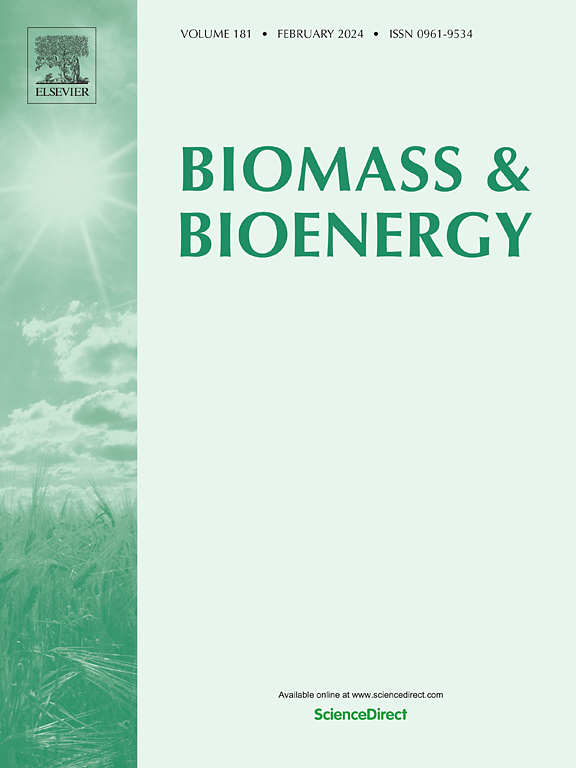Effects of dry and wet torrefaction pretreatment on the physicochemical structure of corn stover-derived porous carbon and its performance in supercapacitor applications
IF 5.8
2区 生物学
Q1 AGRICULTURAL ENGINEERING
引用次数: 0
Abstract
This study used corn stover as raw materials, employed dry torrefaction and wet torrefaction pretreatment methods combined with KOH activation, and successfully synthesized high-value-added porous carbon materials. Dry torrefaction significantly increased the specific surface area of the porous carbon material to 3657.35 m2 g−1 and formed a rich microporous and mesoporous structure, enabling it to exhibit a high specific capacitance of 418.5 F g−1 at a current density of 0.5 A g−1 in a three-electrode system. Wet torrefaction, by increasing the ash removal rate, enhancing the relative crystallinity of the porous carbon precursor, and improving thermal stability, significantly reduced the charge transfer resistance (Rct = 0.02 Ω). Despite the lower specific surface area (2143.70 m2 g−1), it achieved a specific capacitance of 71.0 F g−1 at a current density of 0.5 A g−1 in a two-electrode system and a capacitance retention rate of 101.17 % after 25,000 cycles, demonstrating excellent cycling stability. Therefore, using dry and wet torrefaction pretreatment methods to regulate the structure and surface chemical properties of corn stover-based porous carbon demonstrates the great potential of corn stover as high-performance, low-cost electrode materials for supercapacitors.

求助全文
约1分钟内获得全文
求助全文
来源期刊

Biomass & Bioenergy
工程技术-能源与燃料
CiteScore
11.50
自引率
3.30%
发文量
258
审稿时长
60 days
期刊介绍:
Biomass & Bioenergy is an international journal publishing original research papers and short communications, review articles and case studies on biological resources, chemical and biological processes, and biomass products for new renewable sources of energy and materials.
The scope of the journal extends to the environmental, management and economic aspects of biomass and bioenergy.
Key areas covered by the journal:
• Biomass: sources, energy crop production processes, genetic improvements, composition. Please note that research on these biomass subjects must be linked directly to bioenergy generation.
• Biological Residues: residues/rests from agricultural production, forestry and plantations (palm, sugar etc), processing industries, and municipal sources (MSW). Papers on the use of biomass residues through innovative processes/technological novelty and/or consideration of feedstock/system sustainability (or unsustainability) are welcomed. However waste treatment processes and pollution control or mitigation which are only tangentially related to bioenergy are not in the scope of the journal, as they are more suited to publications in the environmental arena. Papers that describe conventional waste streams (ie well described in existing literature) that do not empirically address ''new'' added value from the process are not suitable for submission to the journal.
• Bioenergy Processes: fermentations, thermochemical conversions, liquid and gaseous fuels, and petrochemical substitutes
• Bioenergy Utilization: direct combustion, gasification, electricity production, chemical processes, and by-product remediation
• Biomass and the Environment: carbon cycle, the net energy efficiency of bioenergy systems, assessment of sustainability, and biodiversity issues.
 求助内容:
求助内容: 应助结果提醒方式:
应助结果提醒方式:


